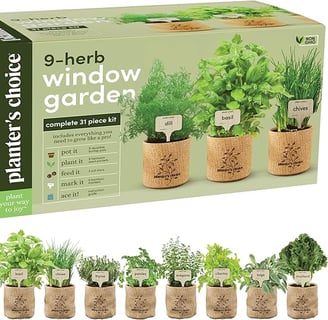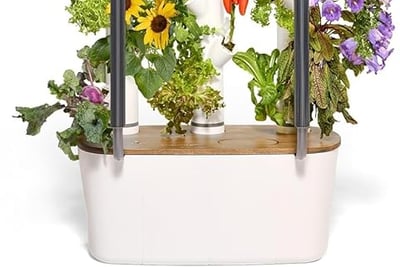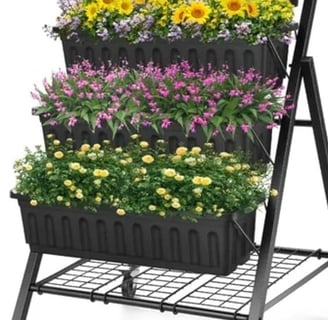How to Start a Garden: Cultivating Green Spaces Anywhere, Even Without a Yard
6 min read


Understanding the Basics of Gardening
Gardening is a rewarding endeavor that combines both science and art. To cultivate a thriving garden, one must first understand the fundamental principles that allow plants to flourish. Essential to plant growth are three primary factors: light, water, and nutrients. Each plant species has its specific requirements, so it is crucial to research which plants are suitable for your gardening conditions.
The quality of soil plays a significant role in gardening success. Different soil types, such as sandy, clay, or loamy soil, possess varying characteristics that affect plant health. For instance, loamy soil, rich in organic matter, generally retains moisture while providing excellent drainage, making it ideal for most plants. Additionally, understanding pH levels is vital. Most garden plants thrive in slightly acidic to neutral pH levels, typically ranging from 6.0 to 7.0. Testing soil pH can provide insight into necessary amendments, such as lime to raise pH or sulfur to lower it.
Sunlight is another key consideration. Different plants have varying sunlight needs, categorized as full sun, partial shade, or full shade. Knowing your garden's sunlight exposure will allow you to select plants that will thrive in those conditions. Alongside physical requirements, gardening has notable psychological benefits. Engaging in gardening activities promotes mental well-being, reducing stress and anxiety while fostering a deeper connection to the environment.
Ultimately, understanding these basic principles equips gardeners, whether seasoned or beginners, to create and maintain productive and enjoyable green spaces. By considering factors such as soil type, pH levels, and sunlight needs, one can make informed decisions, enhancing the overall success of their gardening experience. This foundation sets the stage for what can be an enriching hobby, available even without a traditional yard.
Creative Indoor Gardening Solutions
Indoor gardening is an excellent way to cultivate green spaces, even when outdoor areas are limited. Whether you live in a small apartment or have minimal yard space, there are numerous creative indoor gardening solutions to consider. Window boxes, small indoor planters, and hydroponic systems are just a few options that can help you successfully grow plants indoors.
When selecting suitable plants for indoor growth, it is essential to choose species that thrive in low light or can adapt well to container limitations. Popular choices include herbs like basil and rosemary, leafy greens such as spinach and kale, or ornamental plants that enhance your indoor environment. Utilizing compact and efficient containers can also optimize your gardening space while offering easy access for maintenance.
Maximizing light exposure is crucial for the success of indoor gardening. Positioning plants near south-facing windows can provide natural sunlight, essential for photosynthesis. For areas lacking adequate light, the use of grow lights is recommended. These artificial lights can simulate sunlight, allowing plants to flourish even in darker settings. It is important to ensure that indoor gardeners monitor light exposure, adjusting as needed to prevent light burn or underexposure.
Humidity levels also play a vital role in the health of houseplants. Many indoor plants thrive in higher humidity environments, which can be simulated by regularly misting plants, using humidifiers, or placing plant trays filled with water nearby. Monitoring indoor humidity levels, particularly in winter months when indoor heating can dry the air, keeps plants healthy and enhances growth.
Common challenges faced in indoor gardening, such as pest infestations or inadequate drainage, can often be overcome with proactive measures. Regularly inspecting plants for signs of pests and ensuring proper watering techniques can prevent long-term issues. By embracing these creative solutions, anyone can successfully cultivate a vibrant indoor garden, transforming limited spaces into lush green retreats.
Container Gardening: Getting Started
Container gardening provides an accessible means for individuals seeking to cultivate green spaces, particularly those without traditional yard space. The first step in successfully starting a container garden is selecting the appropriate containers. The size of the container is crucial; it should be adequately sized to accommodate the root system of the chosen plants. For instance, larger plants or those with extensive root systems, such as tomatoes, require a minimum of five gallons, whereas herbs may flourish in smaller pots. Moreover, the material of the container—be it plastic, ceramic, or terra cotta—can impact both aesthetic appeal and functionality. Plastic containers retain moisture better but may lack visual charm, while terracotta offers a rustic look but can dry out more quickly.
Equally important is ensuring that drainage is adequate. Containers should possess drainage holes to prevent waterlogging, which can harm plant roots. Improper drainage may lead to root rot and other issues detrimental to plant health. To optimize drainage, consider placing a layer of small stones or shards at the bottom of the container before adding soil.
When it comes to selecting plants for container gardening, a variety of herbs, vegetables, and flowers adapt well to confined spaces. Culinary herbs such as basil, parsley, and chives thrive in containers and can enhance home-cooked meals. Vegetables such as peppers and lettuce are ideal for container growing, offering fresh produce without the necessity of extensive ground space. When choosing flowers, consider compact varieties like petunias or geraniums that not only brighten the space but can also attract pollinators.
Soil selection is another vital consideration; it’s advisable to use a high-quality potting mix designed for containers, which offers adequate drainage and nutrient retention. Regarding watering techniques, container plants typically require more frequent watering compared to ground-planted ones due to their limited soil volume. It is essential to monitor moisture levels, ensuring that plants receive enough water without drowning. Lastly, applying a balanced, water-soluble fertilizer every few weeks can provide necessary nutrients, promoting healthy growth.
Gardening Anywhere: Tips for Unconventional Spaces
In today's urban environment, the constraints of limited space should not deter individuals from pursuing their passion for gardening. From balconies to rooftops and community gardens, creative gardening solutions can empower anyone to cultivate their own green space, irrespective of the size of their living area. Vertical gardening is one popular method that maximizes limited square footage. This technique involves growing plants on trellises, wall-mounted pockets, or hanging containers, enabling you to utilize vertical surfaces efficiently. Additionally, incorporating shelves or ladder-like structures can introduce more planting space while also adding aesthetic value to your area.
Recycling materials for gardening purposes is not only an eco-friendly approach but also a cost-effective solution. Repurposed items such as old wooden crates, tin cans, or even plastic bottles can be transformed into planters with a little creativity. Each item can serve as a unique vessel for your plants, allowing you to express your personality and style. Be sure to consider drainage when creating these containers to ensure a healthy environment for your plants to thrive.
For those lacking personal gardening spaces, seeking out community gardening opportunities can provide a fulfilling way to connect with nature and fellow gardening enthusiasts. Many urban areas offer community gardens where individuals can rent plots, share resources, and collaborate on gardening projects. In addition, local horticulture clubs often provide valuable information, workshops, and resources to help novice gardeners develop their skills. Connecting with these community resources not only fosters a sense of belonging but also enhances the gardening experience.
Ultimately, regardless of the space available, the act of gardening is within reach for anyone willing to embrace it. By exploring unconventional spaces and utilizing creative techniques, individuals can enjoy the many benefits that gardening has to offer, leading to a rewarding and fulfilling hobby.











